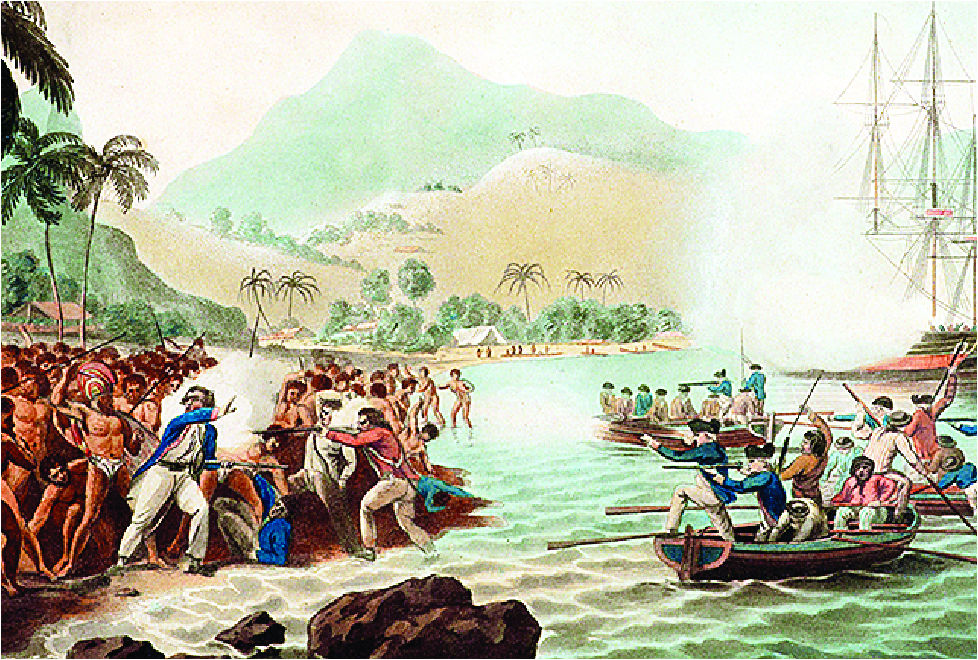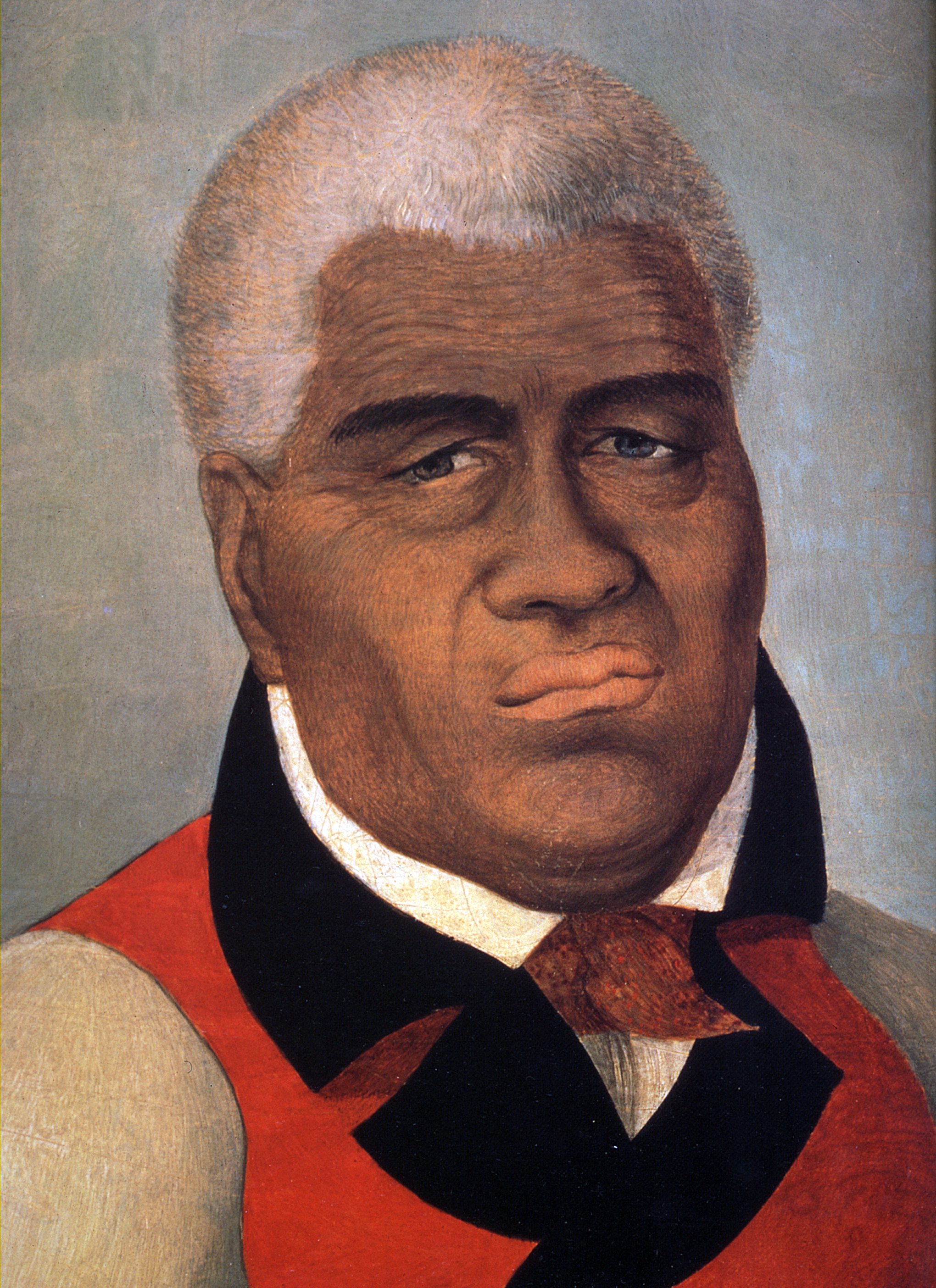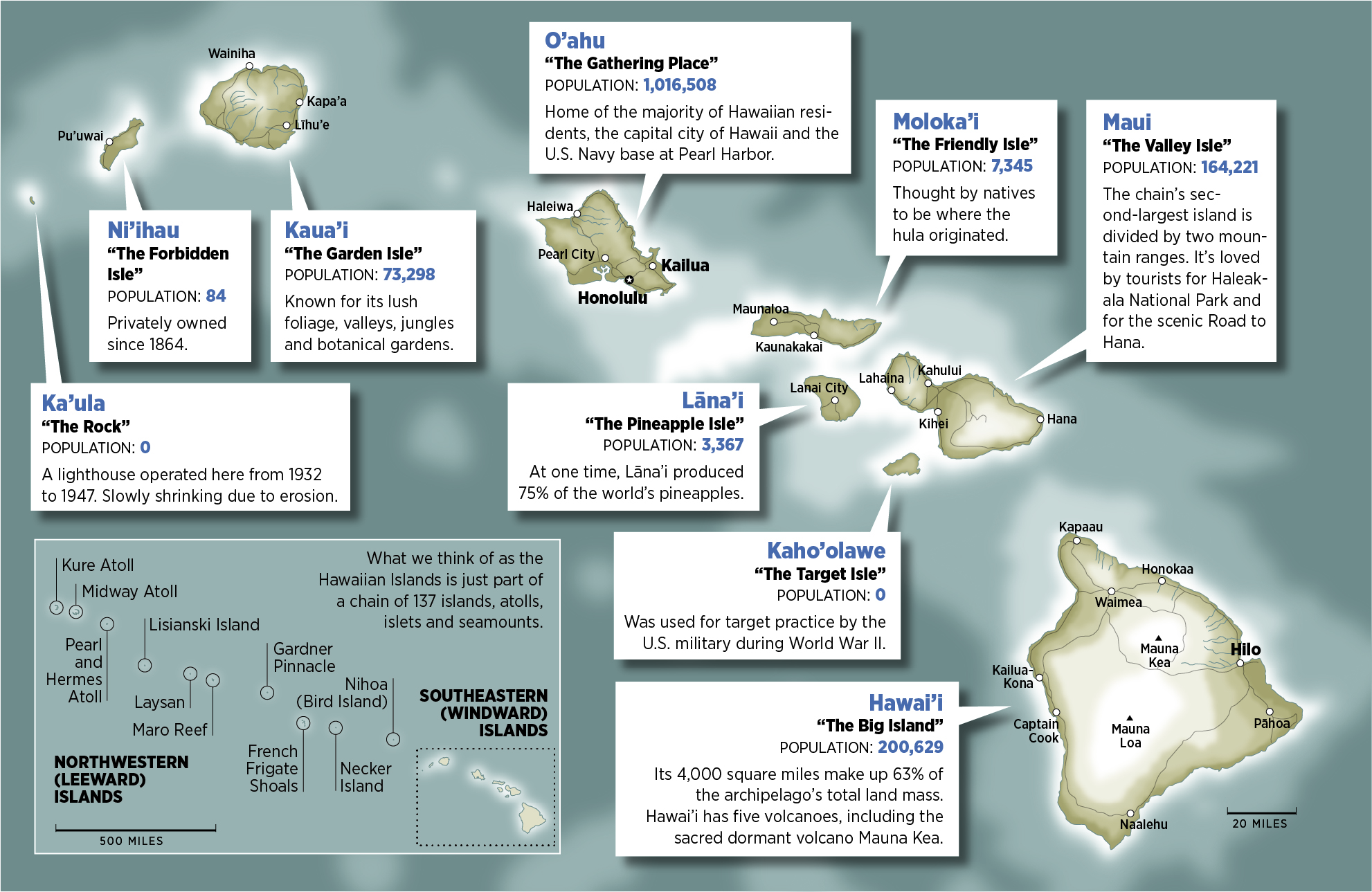
Aloha, Hawaii: The murky path from conquest with the flag's 50th star
On Aug. 21, 1959 — 65 years ago Wednesday — a chain of islands in the Pacific Ocean —Hawaii, a U.S. territory since 1898 — became the 50th state and the only state that’s not part of the North American continent.
Hawaii's Long, Long Path to Statehood
Hawaii was most likely first settled by Polynesians from the Marquesas Islands in the South Pacific, who would have arrived in double-hulled canoes as early as the year 300.
For the next several hundred years, a series of warring factions conquered the islands. In 1778, British Capt. James Cook stumbled upon the islands, and named them the Sandwich Islands, for the Earl of Sandwich. He sent word of the islands back to Europe and America, but was killed while trying to take the chief of the chain’s largest island, Hawai’i, hostage during a dispute.

The death of Capt. Cook in 1779. Picture from WikiMedia Commons
Shortly afterward, Kamehameha I managed to unify the islands and established the Kingdom of Hawaii in 1795. But by that time, Europeans and Americans were arriving in larger numbers, starting sugar cane plantations that used forced Native Hawaiian labor.
In 1887, American interests forced King David Kalakaua to sign away most of the power of the Native Hawaiian rulers and granted the right to vote to only white, English-speaking property owners. In 1893, white planters overthrew the final native ruler, Queen Lili’oukalani, with the help of the U.S. Navy which threatened to invade the islands. Even President Grover Cleveland condemned the coup and expressed support for the queen, but the new government refused to step down, establishing the Republic of Hawaii.

Kamehameha I, Wikimedia Commons
he Republic immediately began pushing to be annexed into the United States. The upside to the U.S. was the opportunity to build a stopover for military and merchant shipping. The downside for American politicians was that such a move would pave the way for citizenship for the islands’ large population of Polynesian, Chinese and Japanese residents at a time when America was excluding Asian immigration.
That changed during the Spanish-American War in 1898. Congress passed a resolution annexing Hawaii as a U.S. territory. Two years later, Hawaii was granted self-governance.
The territory’s first governor — Stanford B. Dole, cousin of the future pineapple plantation owner — mentioned the possibility of statehood in his 1894 inaugural address. A bill to make Hawaii a state was introduced in the House of Representatives in 1919, but went nowhere.
By World War II, a majority of voters in Hawaii reportedly supported statehood. Four statehood bills were passed by the House between 1947 and 1953, but never by the Senate.
Finally, the Hawaii Admission Act passed the Senate, 76 to 15, on March 11, 1959, and a revised bill passed the House, 323 to 89, a day later. President Dwight D. Eisenhower signed the bill into law on March 18.
The bill was specific about which of the archipelago’s islands would be included in a state. Excluded, the bill said, would be “the atoll known as Palmyra Island” as well as “the Midway Islands, Johnston Island, Sand Island (offshore from Johnston Island) or Kingman Reef.”
Midway was the site of a major World War II battle in 1942. The Navy closed its facilities there in 1993. Johnston Island had been used to test nuclear and biological weapons, had served as a missile base and, later, would become a dumping ground for Agent Orange. The military closed its facilities there in 2005.
In June 1959, residents of Hawaii voted in a referendum to accept statehood. Hawaii officially became the nation’s 50th state on Aug. 21, 1959.
Hawaii's 'Windward Islands'

Hawaii By The Numbers
137 - Number of islands in the entire Hawaiian archipelago, which extends for 1,500 miles.
2,100 - Distance in miles Hawaii is from the continental United States.
60 - Years it took from when Hawaii was annexed by the U.S. to when it became a state.
93% - Percentage of Hawaiian residents who voted in favor of statehood in 1959.
1.45m - Number of residents in Hawaii, making it the 13th most densely populated state.
75,000 - Defense Department personnel employed in Hawaii. About 18% of annual federal spending in Hawaii is by the military.
31 - Number of hazardous waste sites in Hawaii, due to the longtime military presence.
95% - Percentage of residents covered by Hawaii's state-run health care system.